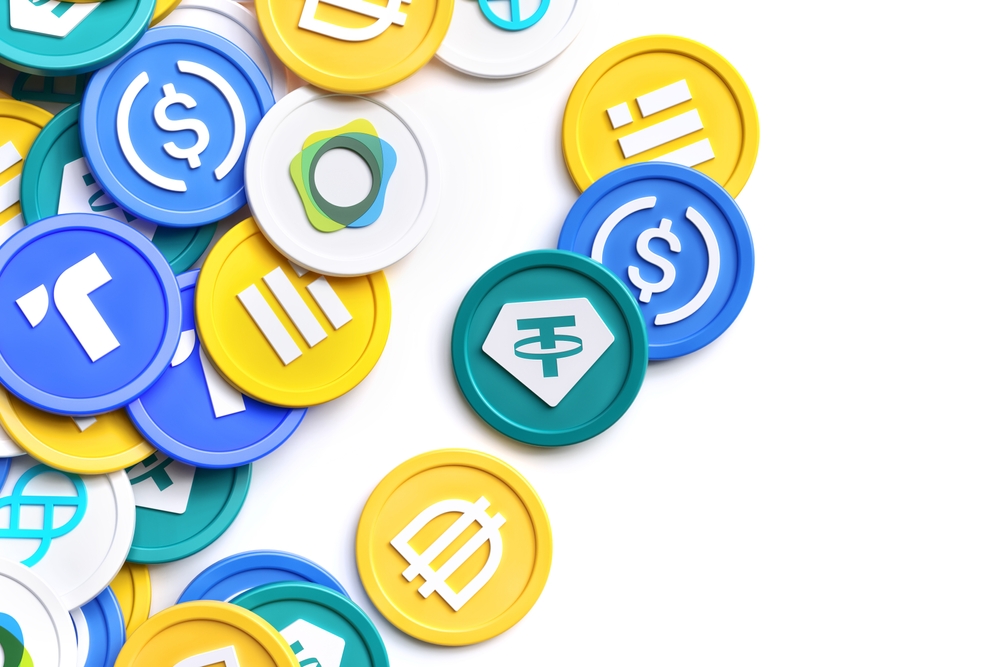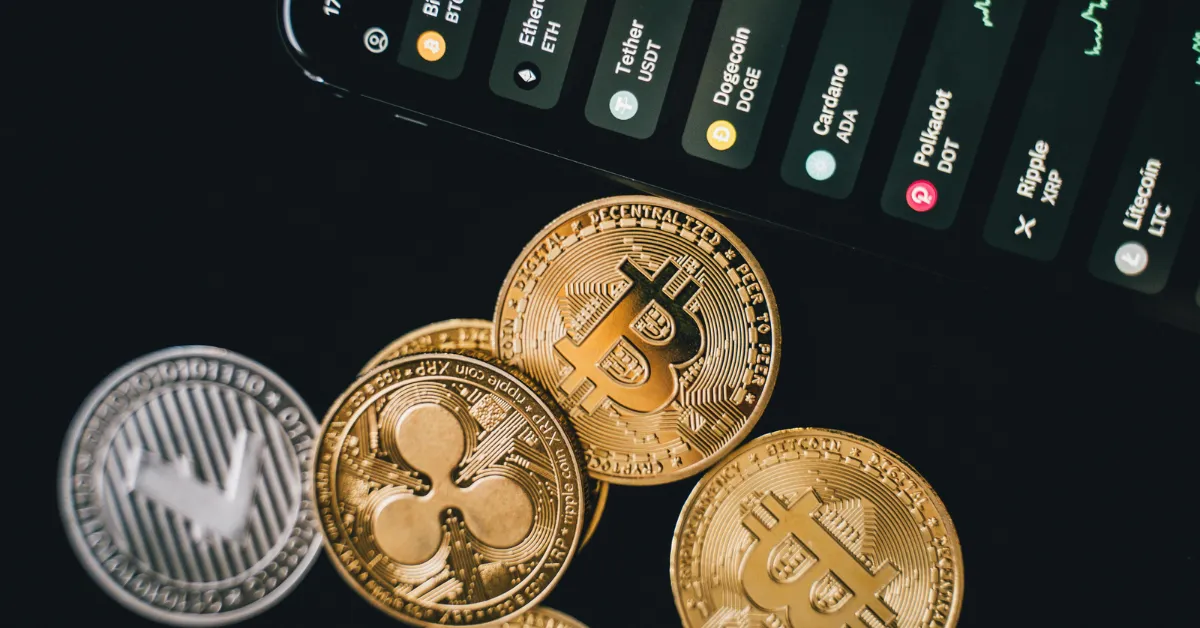Stablecoins Explained

Ever wondered how some cryptocurrencies keep a consistent value while others swing wildly? That’s where stablecoins come in. Cryptocurrency is known for its extreme volatility; one day Bitcoin is skyrocketing, and the next, it crashes. This instability makes it tough for businesses and individuals to use them as a reliable medium of exchange. Enter stablecoins—designed to bring some much-needed stability to the crypto world. Unlike Bitcoin or Ethereum, stablecoins are pegged to stable assets like fiat currencies or commodities, helping them maintain a consistent value. This stability makes them ideal for everyday transactions, smart contracts, and other financial applications. Want to move in and out of other cryptocurrencies without worrying about drastic price changes? Stablecoins have you covered by offering a reliable way to manage liquidity. These coins can be backed by reserves of equivalent assets like USD, gold, or even other cryptocurrencies, and sometimes use algorithms that adjust supply based on demand to keep prices stable. The trust factor often comes from adhering to financial regulations and regular audits. Imagine using a cryptocurrency that doesn’t fluctuate wildly in value; that’s the promise of stablecoins. They offer the consistency needed for daily life and as a store of value while minimizing the risks you get with other cryptocurrencies. Curious about how they maintain stability and the different types of stablecoins? You’ll see why they are becoming central in the cryptocurrency landscape!Cryptocurrency is known for its extreme volatility. One day Bitcoin is skyrocketing, and the next, it crashes. This instability makes it difficult for businesses and individuals to use cryptocurrencies as a reliable medium of exchange. Enter stablecoins—designed to bring some much-needed stability to the crypto world.Here’s a quick look at what stablecoins aim to solve:So, how do stablecoins manage to stay stable? The simple answer is that they are pegged to stable assets. For instance, a stablecoin might peg its value to the US Dollar. But it’s not just about pegging; it’s also about maintaining that peg.The methods used to ensure stability usually involve one or more of the following:Imagine using a cryptocurrency that doesn’t fluctuate wildly in value. Stablecoins were created to provide this very feature. Unlike regular cryptocurrencies like Bitcoin, which are known for their volatility, stablecoins offer the consistency needed for daily transactions and as a store of value.Here are some highlights:Curious about the different types of stablecoins and how they maintain their stability? The next section will explore this in detail, providing you with the full picture of why stablecoins are becoming so crucial in the cryptocurrency landscape.Imagine having a cryptocurrency that doesn’t give you heart palpitations every time the market shifts. That’s what stablecoins are all about. They are designed to minimize price volatility by pegging their value to a stable asset.This asset could be a fiat currency like the U.S. dollar or a commodity such as gold. Because of this connection to stable assets, the value of stablecoins remains relatively consistent compared to other cryptocurrencies.“Stability breeds confidence” – and this is exactly what stablecoins aim to deliver in the otherwise volatile world of crypto.In a world where Bitcoin can swing by thousands of dollars in a day, stability can be a game-changer. Stablecoins bring about a sense of reliability, allowing people to use and hold digital currencies without worrying about sudden value drops.They matter because:Let’s explore the different types of stablecoins and what makes each unique:Let’s break down the fascinating mechanisms behind this stability:One study from the Bank of England highlights how these mechanisms can offer a stable alternative for international remittances, drastically cutting down costs and time.Ever wondered how stablecoins manage to keep their value stable in the ever-so-volatile world of cryptocurrency? Well, you’re not alone. Let’s break it down so you can get a clear picture.The magic behind stablecoins is their ability to peg their value to stable assets. This can be fiat currencies like the US Dollar, or commodities like gold.“Stability is not immobility” – Henri PoincaréBlockchain isn’t just a buzzword here—it’s a crucial component. It provides transparency, security, and decentralization, allowing anyone to verify the reserves backing the stablecoins. For example, you can easily check the reserves of USDC on the Ethereum blockchain.Moreover, blockchain integration allows quicker and cheaper transactions compared to traditional banking systems. No more waiting for days for a transaction to clear. With stablecoins, it’s almost instantaneous and comes with lower fees.There are a few major players in the stablecoin arena that you should know about:Each of these stablecoins employs its own methods and technologies to ensure stability, transparency, and security, making them not just popular but also essential in the rapidly growing crypto ecosystem.Intrigued by the inner workings of stablecoins? Curious to know how they generate revenue and keep operations afloat? That’s exactly what we’ll explore next. Stay tuned, it’s going to be eye-opening!Stablecoins might be stable in value, but ever wondered how they can be financially rewarding for their issuers? Trust me, there’s a lot more to it than meets the eye.Stablecoin issuers aren’t just in it for the stability; they’re also looking to make a profit using various strategies. One of the primary ways they generate revenue is by utilizing customer deposits. Imagine you parking your hard-earned dollars with them—well, that money doesn’t just sit there gathering dust. Instead, it gets put to work.A 2021 report by Circle, the company behind USDC, revealed that they earned significant revenue through conservative investments in U.S. Treasuries and other cash equivalents. This makes it clear that the business models of stablecoin issuers aren’t just reliant on transaction fees but also on smart, low-risk investments.So, where exactly is this collateral placed? Stablecoin issuers often invest customer deposits in diverse financial instruments to maximize returns while minimizing risk. Here are some examples:In fact, as of 2022, Tether, the company behind USDT, had allocated a portion of their secure reserves in the form of commercial paper, earning interest over time. This not only helps in maintaining the peg to the USD but also ensures that their operations remain profitable.Transparency and regulatory compliance are keys to sustaining trust in stablecoins. Without these, no one would feel comfortable investing their money in them.An example is USDC, which is frequently audited by reputable firms like Grant Thornton. Regular audits and transparency reports ensure that there is a 1:1 backing of USDC tokens to actual dollars. These steps go a long way in building and maintaining user trust.Regulations also play a huge role in ensuring that stablecoin issuers operate within legal frameworks, protecting you and your investments. Governments around the world are increasingly focusing on this, ensuring more predictable and safer investment avenues.“Trust is built when someone is vulnerable and not taken advantage of.” – Bob Vanourek, author of Triple Crown LeadershipThis quote perfectly encapsulates why transparency and credibility are non-negotiable for stablecoin issuers.Curious about what makes Bitcoin different from stablecoins? Stay tuned as we unravel some common misconceptions and fascinating insights!This article should keep your readers engaged and eager to continue into the next sections. The personal, conversational tone will appeal to anyone from a crypto enthusiast to a newcomer, and by offering a sneak peek into what comes next, you keep them hooked.One of the most common questions people new to crypto often ask is whether Bitcoin is a stablecoin. It’s an understandable mix-up. After all, Bitcoin is the poster child of the crypto world. But let’s clear the air: Bitcoin and stablecoins are fundamentally different.Bitcoin was the first cryptocurrency and remains the most well-known. It’s decentralized, meaning it’s not controlled by any single entity. This decentralization is a huge part of its appeal, but it comes with a downside: volatility. The price of Bitcoin can swing wildly in a short period of time. In contrast, stablecoins are designed to maintain a steady value. They’re pegged to stable assets like the U.S. dollar or gold.Bitcoin is built to revolutionize the financial system by providing a decentralized, censorship-resistant platform. Stablecoins, on the other hand, aim to bring stability and reliability to the often-volatile world of cryptocurrency.“In a world where cryptocurrencies can swing by large percentages in a matter of minutes, stablecoins offer a tranquil oasis.” – Unknown Crypto EnthusiastBoth Bitcoin and stablecoins play unique roles in the broader crypto ecosystem. Bitcoin’s role is often compared to gold—it serves as a store of value and a hedge against economic uncertainty. On the other hand, stablecoins function more like traditional money. They’re used for day-to-day transactions, facilitating trade on crypto exchanges, and even in decentralized finance (DeFi) applications.For example, if you’re trading on a crypto exchange, you might want to park your funds in a stablecoin like USDT to avoid the risk of market fluctuations. Similarly, if you’re making a cross-border payment, stablecoins can offer the benefit of quick transfers with minimal fees. Bitcoin, while revolutionary, isn’t ideal for these use cases due to its price volatility and slower transaction speeds.Wondering how stablecoins can be used for everyday transactions or why they might be a better store of value than other cryptocurrencies? Let’s explore that in the next part!Stablecoins have grown tremendously in popularity, and for good reason. If you’re wondering why you’d ever want to use a stablecoin, let’s dig into some of their real-world uses that go beyond just hype. Whether you are new to crypto or a seasoned investor, stablecoins offer solutions that address common pain points in the cryptocurrency space.The main attraction of stablecoins is that they can be used as a reliable medium of exchange. Imagine you’re doing cross-border business; traditional money transfers can be slow and expensive. Stablecoins, however, enable you to send money anywhere in the world quickly and at a fraction of the cost. For instance, USDC (USD Coin) can be sent to anyone with a crypto wallet, providing both parties have internet access. This efficiency makes stablecoins ideal for remittances and everyday transactions.Ever checked your crypto portfolio, seen the massive swings, and wished for something more stable? That’s where stablecoins come in. Unlike Bitcoin or Ethereum, whose values can fluctuate dramatically, a stablecoin like DAI aims to maintain a 1:1 peg with the US dollar. This stability makes them perfect for those who want to preserve the value of their assets without worrying about market volatility. Bank of England even has an explainer that covers this aspect comprehensively.For traders, stablecoins are invaluable. Imagine you’re trading Bitcoin on a crypto exchange. Having a stablecoin on hand can provide a safe haven during volatile market conditions. Instead of cashing out to fiat, which might take time and incur fees, traders can quickly move their funds into a stablecoin like USDT (Tether). This helps them retain the value and stay agile, ready to seize the next trading opportunity. You can read more about the mechanics on CoinDesk.Stablecoins are proving to be more than just a buzzword; they are becoming a critical tool in the crypto world. But what’s on the horizon for stablecoins? Stick around, and we’ll explore the future trends and potential challenges in the next part. You won’t want to miss it!If you’ve been following along, you probably get why stablecoins are a big deal. But what comes next? Let’s take a look at the future of stablecoins and some thoughts on their long-term potential.The stablecoin space is evolving fast, and there are some exciting trends on the horizon. One development is the rise of central bank digital currencies (CBDCs). Countries like China are already piloting their digital yuan, while others, like the European Union, are exploring digital versions of their currencies. These official digital currencies could integrate well with existing stablecoins or even influence new forms of stablecoins.Another trend to watch is the growing use of stablecoins in decentralized finance (DeFi). Protocols like MakerDAO and Compound are using stablecoins to offer everything from loans to interest-bearing accounts. According to a report by DeFi Pulse, the value locked in DeFi protocols has skyrocketed over the past year, much of it driven by stablecoins.While stablecoins have a bright future, there are definitely some hurdles ahead. Regulation is a biggie. Governments and regulatory bodies are increasingly scrutinizing stablecoins. In 2021, the U.S. Treasury released a report calling for stricter regulations on stablecoin issuers to ensure they have enough reserves to back their coins. The lack of clear, global regulatory standards could be an obstacle but also an opportunity for innovation and better frameworks.Another challenge is maintaining trust and transparency. With more players entering the market, it’s crucial for stablecoin issuers to be transparent about their reserves and business practices. If not, they risk losing user confidence. Transparency is not just a legal requirement but a trust-building measure in the long run.Understanding stablecoins is critical for anyone interested in cryptocurrency. They offer a stable, reliable way to engage with the crypto world, be it for transactions, investments, or trading. Despite the challenges, the potential for growth and innovation in the stablecoin space is immense.For those who want to dig deeper into the technicalities or the economic theories behind stablecoins, useful resources include Investopedia, Bank of England, and CoinDesk. These platforms offer a wealth of knowledge to complement what we’ve discussed.So, stay informed and keep an eye on stablecoins. They’re set to be an integral part of our digital financial future.I am an accomplished and enthusiastic business development professional who works in the crypto world from the roots of the blockchain and cryptocurrency economy environment.

Published on Other News Site


















